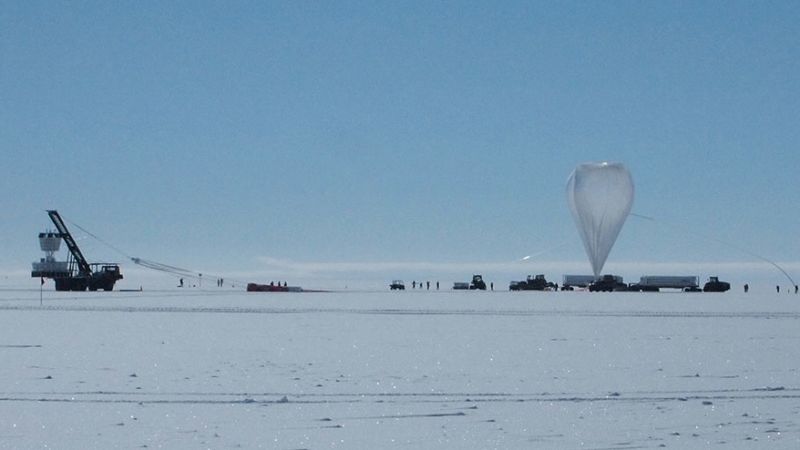
ANTARCTICA – Scientists are grappling with a decade-long enigma as they attempt to identify anomalous signals detected beneath the Antarctic ice. These signals, which seem to defy the laws of physics, have sparked a fervent search for explanations.
Immediate Impact
The mysterious radio waves were discovered during efforts to detect high-energy cosmic particles known as neutrinos. These particles, often termed “ghostly,” travel from the far reaches of the cosmos and are capable of passing through matter without alteration. The discovery occurred while using vast expanses of water and ice to track neutrinos, which could illuminate the origins of cosmic rays, the universe’s most energetic particles.
Key Details Emerge
The Antarctic Impulsive Transient Antenna (ANITA), a NASA project, played a crucial role in this discovery. Between 2006 and 2016, ANITA flew balloons equipped with instruments over Antarctica, capturing anomalous radio waves that appeared to originate from below the horizon. This suggested they had traversed thousands of miles of rock, a feat current physics cannot explain.
The ANITA team believed these signals could not be explained by the current understanding of particle physics.
Industry Response
Follow-up observations, including those by the Pierre Auger Observatory in Argentina, have yet to replicate ANITA’s findings. The results, published in Physical Review Letters, highlight the ongoing mystery. Study coauthor Stephanie Wissel, an associate professor at Pennsylvania State University, stated, “Our new study indicates that such signals have not been seen by an experiment like the Pierre Auger Observatory.”
By the Numbers
The Pierre Auger Collaboration analyzed over a decade’s worth of data to understand ANITA’s signals.
Despite extensive research, the origin of these signals remains elusive. Larger and more sensitive detectors might eventually resolve the mystery or confirm if the signals were anomalies.
What Comes Next
Detecting neutrinos on Earth is pivotal for tracing their cosmic origins. Cosmic rays, primarily composed of protons or atomic nuclei, are unleashed by powerful particle accelerators. Neutrinos could provide insights into these cosmic phenomena. However, their elusive nature makes them difficult to detect, despite interactions with water and ice.
Background Context
ANITA’s design aimed to detect the universe’s highest energy neutrinos. The experiment’s radio antennae searched for short radio wave pulses produced when neutrinos collide with Antarctic ice atoms, resulting in a cascade of lower-energy particles.
“The radio waves that we detected nearly a decade ago were at really steep angles, like 30 degrees below the surface of the ice,” Wissel said.
Expert Analysis
According to Justin Vandenbroucke, an associate professor at the University of Wisconsin, Madison, neutrinos are expected to arrive slightly below the horizon, where minimal Earth absorption occurs. However, ANITA’s signals appeared to originate well below the horizon, challenging the Standard Model of particle physics.
The Pierre Auger Observatory’s hybrid detection methods have yet to identify similar signals, despite its vast collecting area. A separate study using the IceCube Experiment also failed to detect these anomalies.
Regional Implications
Oddly, some scientists hypothesize that tau neutrinos, which regenerate at high energies, might be responsible. Yet, the steep angles associated with the signals make this scenario unlikely.
“These are 30 degrees below the horizon. There’s just too much material,” Wissel noted.
Timeline of Events
ANITA’s flights from 2006 to 2016 marked the beginning of this scientific puzzle. Despite numerous studies and collaborations, the mystery persists.
The Future of Detection
Looking ahead, Wissel is developing a new detector, the Payload for Ultra-High Energy Observations (PUEO), set to fly over Antarctica in December. With greater sensitivity than ANITA, PUEO could unveil more about the anomalous signals.
“I’m excited that when we fly PUEO, we’ll have better sensitivity,” Wissel expressed. “In principle, we should be able to better understand these anomalies.”
As scientists continue their quest for answers, the enigmatic signals from Antarctica remain a compelling scientific challenge, driving researchers to reevaluate existing theories and explore new possibilities.




